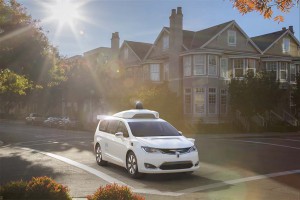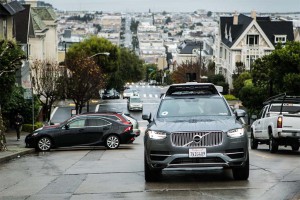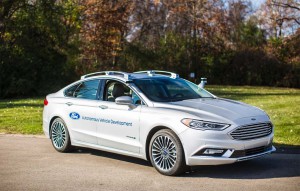Both Daimler and Ford plan to have their first fully driverless cars in production by 2025, far sooner than many might have expected just a few years ago. Meanwhile, after a slow start, a new generation of longer range, more affordable battery-cars are just starting to come to market.
By pairing those two technologies, automakers and ride-sharing companies could radically transform the way Americans travel, predicts a new study by the Boston Consulting Group. It predicts that fully a quarter of the miles Americans clock on the road will, by 2025, be driven inside fully driverless battery vehicles operated by ride-sharing services such as Uber and Lyft.
“When you take shared vehicles, electrified powertrains suddenly make sense, and it becomes even more practical at this level of autonomy,” said Justin Rose, one of the Chicago-based co-authors of the new BCG study.
The consulting firm isn’t the first to predict a bright future for autonomous vehicles operated by ride-sharing services. Travis Kalanick, the CEO of Uber, has long argued that driverless vehicles will lower the cost of his service to the point it will be cheaper than owning a car. Lyft co-CEO John Zimmerman last year forecast privately owned vehicles will all but vanish from major urban centers within a decade.
The BCG study supports that thesis – the research suggesting that larger, denser cities, such as New York or Chicago, will see the most significant shift.
(Daimler, Bosch partner; aim to get driverless car on the road by 2021. Click Here for the story.)
Today, it costs about $1.22 per mile driven – at an average 10,000 miles a year — for a resident of those cities to operate a private vehicle. Based on what it’s estimated fully driverless electric vehicles would cost a service such as Uber to operate by 2030, BCG figures that would come to just $0.51 per mile.
“The economics are so compelling,” once you eliminate what ride-share drivers now make, the vast majority” of what a customer now pays a service like Uber, said analyst Rose.
The advantage of using a ride-sharing service would diminish, however, the smaller the city, said co-author Rahul Thoraia, adding that in cities of less than 1 million population, the benefit would go to private vehicles.
The key is having enough of a population base to keep a ride-sharing services vehicles constantly busy. In a city like Chicago, nearly 200,000 such driverless battery-cars would likely be needed, and they would clock at least 100,000 miles annually.
The BCG study does rely on some critical assumptions. For one thing, it foresees a sharp drop in the cost of both battery vehicles and fully driverless technology. Things do appear to be moving in that direction, however.
At the beginning of this decade, lithium-ion batteries cost about $1,000 per kilowatt. Today, General Motors is paying about $150 for the LIon cells in its new Chevrolet Bolt EV. And Nissan insiders tell TheDetroitBureau.com they are targeting $100 or less with the second-generation version of the Leaf EV debuting later this year.
As for autonomous vehicles, the critical LIDAR sensors – which map the world in high-definition 3D – cost about $75,000 at the beginning of the decade. Waymo, the self-driving spin-off of Google, is down to $7,500. And various forecasts, including one from LIDAR maker Velodyne, see that soon dropping as low as $50. With a vehicle that might use four or five such devices, that’s a significant shift.
Like other forecasts, the BCG study predicts that fully driverless vehicles will largely be used by ride-sharing services. Ford, for its part, says it will target services like Uber and Lyft, as well as commercial delivery services.
Who will lead the transformation is far from certain. In recent years, Waymo has widely been seen as the tech leader in autonomous research. But a separate study released this month by Navigant Research put Ford at the top of the list, followed by GM, Renault-Nissan and Daimler. The key, according to Navigant, is developing a “pathway to production.” Waymo has yet to figure out how to put its technology on the road. Those four traditional automakers have been investing in alternative mobility projects – GM, for example, investing $500 million last year for a stake in Lyft.
(New study names leaders in autonomous vehicle research. Click Here to see who’s on top.)
There are still plenty of obstacles before the vision BCG outlines can translate into reality – as recent crashes involving Tesla’s Autopilot and an Uber autonomous prototype demonstrated. But if the industry can meet the targets the new study outlines, there could be some dramatic changes in terms of the way Americans get from Point A to Point B.
(Uber autonomous car crashes in Arizona. Click Here for the story.)



